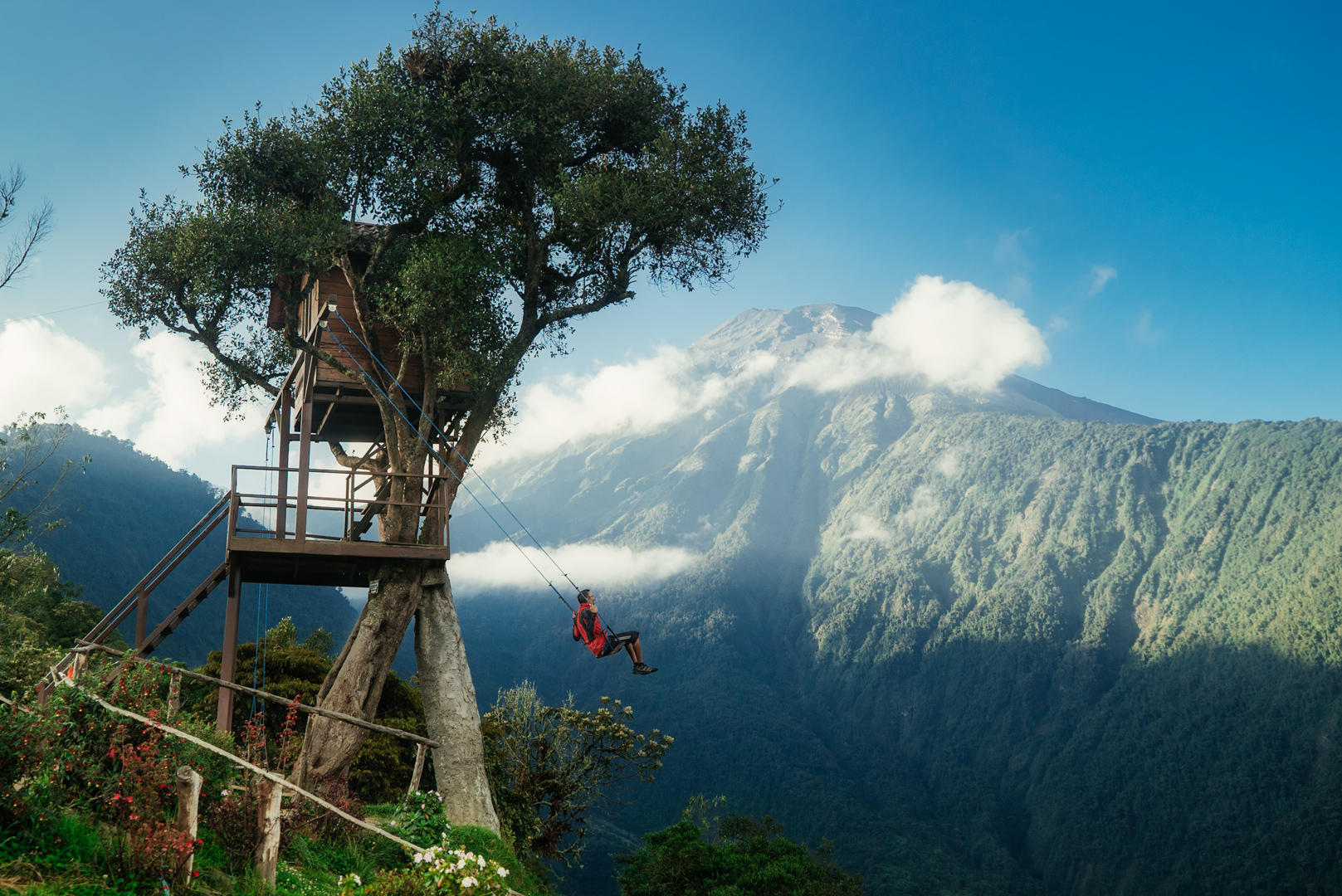Somewhere in Ecuador, a swing hung over a steep rock face at 2600-m above sea level. They called it the “Swing at the End of the World” because a fall from the swing into the abyss could bring the end of the world to the rider. The swing was attached to a wooden house nestled in a tree known as the “Casa del Arbol” or “The treehouse”. To the left of the treehouse stood the 5023-m snow-peaked Tungurahua volcano which had last erupted about nine months before my I visited this place.
Early morning breeze filled my lungs as I sat on the swing. In the soft morning light, I was calm but inside me was a volcano too. As I moved to and fro on the swing my mind wandered back and forth like a pendulum between—family and road; past and future; dreams and fears.
A swing seems to have the power to break the barriers of time and space. I had always wanted to fly and the swing gave me the wings to do that. Looking at the big birds flying over the valley, for one moment, I was tempted to jump off the swing while still in the air, but then realised the hundreds-of-meters drop below.
As the sun rose above the mountains, the shadows crawled down the slopes. I kept swinging on the swing—going higher and higher—until I had nausea. When I got off the swing, I had lost my orientation. The whole world was circling around me. I immediately ran into a corner. My empty stomach couldn’t throw up anything except some water I had drunk a couple of hours ago. On the way back, I turned around as I remembered something—the swing was still moving back and forth; as if an invisible child was still riding on it.



